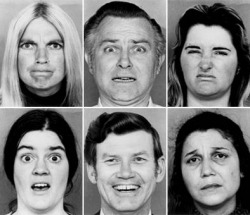Faces of Face

Face is otherwise known as an extension of self-concept, or a vulnerable identity resource. Toomey states that our facial expressions are a typical sign that shows we feel awkward, embarrassed, proud, and ashamed. Cambridge University Linguists Penelope Brown and Stephen Levinson better define face as "the public self-image, that each member in society claims for themselves." This indeed is very accurate, Ting Toomey supports this statement by claiming that face is "the projected image of one's self in a relational situation."
-Whos Face are you trying to save? MINE!
Ø Question directed at Americans and Individualistic cultures.
Ø Toomey claims that over two-thirds of the world faces concerns focus on the other person.
Ø Event of conflict, Collectivistic cultures pay more attention to the face of others than they maintain their own.
Ø Mutual-Face concern: Where there is equal concern for both parties’ personal images, as well as the public image of their relationship.
Ø Face-Restoration: The typical strategy in individualistic cultures, where an individual visits a unique place in their life to defend against any loss of personal freedom.
Ø Face-Giving: This is done out of concern for others, and is the strategy used to defend and support another person’s need of inclusion.
-Whos Face are you trying to save? MINE!
Ø Question directed at Americans and Individualistic cultures.
Ø Toomey claims that over two-thirds of the world faces concerns focus on the other person.
Ø Event of conflict, Collectivistic cultures pay more attention to the face of others than they maintain their own.
Ø Mutual-Face concern: Where there is equal concern for both parties’ personal images, as well as the public image of their relationship.
Ø Face-Restoration: The typical strategy in individualistic cultures, where an individual visits a unique place in their life to defend against any loss of personal freedom.
Ø Face-Giving: This is done out of concern for others, and is the strategy used to defend and support another person’s need of inclusion.
